In a world where couch surfing and snack attacks often take center stage, physical health services stand as the unsung heroes of well-being. They’re like the personal trainers of life, ready to whip your body into shape while you’re busy binge-watching your favorite series. Who knew that getting fit could be as easy as trading in that bag of chips for a brisk walk?
Physical Health Services
Physical health services encompass a wide range of offerings designed to enhance overall well-being. These services include preventive care, exercise programs, dietary consultations, and rehabilitation therapies. Individuals interested in maintaining a healthy lifestyle can access these services through various channels, such as clinics, gyms, and wellness centers.
Preventive care focuses on early detection and intervention, significantly reducing the risk of chronic diseases. Regular check-ups and screenings allow healthcare providers to monitor health markers and address potential issues proactively. Exercise programs, available in different formats, cater to various fitness levels and preferences. Group classes or personal training sessions can motivate individuals to stay active and committed.
Dietary consultations provide tailored nutrition plans, enhancing one’s fitness journey. Nutritionists evaluate dietary habits and recommend adjustments to support healthy eating. Rehabilitation therapies encompass services that aid recovery from injuries or surgeries, ensuring individuals regain strength and mobility effectively.
Accessing evidence-based resources encourages informed choices regarding physical health. Programs often utilize current research and best practices to promote optimal outcomes. Engagement in physical health services supports both mental and physical wellness. With regular participation, individuals can experience improved energy levels, better mood, and increased resilience to stressors.
Considering the variety of available services, individuals should select those that best align with personal goals and circumstances. A combination of preventive care, exercise, nutrition, and rehabilitation addresses both immediate needs and long-term health objectives. Each service plays a crucial role in crafting a comprehensive approach to physical health maintenance.
Importance of Physical Health Services
Accessing physical health services significantly contributes to overall well-being. These services facilitate healthier lifestyles and promote engagement in regular physical activities.
Enhancing Overall Well-Being
Physical health services promote mental clarity, boost energy levels, and improve mood. Individuals experience notable benefits from participating in structured exercise programs. Personalized dietary consultations empower people to make informed food choices. Rehabilitation therapies play a crucial role in restoring function and reducing pain. Together, these services foster resilience and enhance quality of life.
Preventing Chronic Diseases
Preventive care significantly decreases the likelihood of developing chronic diseases. Early detection of health issues allows for timely intervention, which often makes a substantial difference. Regular participation in exercise programs strengthens cardiovascular health and improves endurance. Individuals who maintain a balanced diet reduce risks associated with obesity, diabetes, and heart disease. Accessing these services consistently leads to healthier, longer lives.
Types of Physical Health Services
Physical health services encompass a variety of offerings aimed at enhancing individual well-being and promoting healthier lifestyles. These services play a crucial role in addressing different aspects of physical health, from routine care to specialized therapies.
Primary Care Services
Primary care services serve as the foundation of health management, providing comprehensive evaluations, treatment for acute illnesses, and ongoing patient education. They facilitate regular check-ups and screenings, which identify potential health issues early on. Accessing these services often means visiting a primary care physician or a healthcare facility that specializes in family medicine. Effective communication between patients and providers ensures personalized care plans that align with individual health objectives. Patients benefit from preventive measures combined with treatment strategies that emphasize overall wellness.
Preventive Health Services
Preventive health services focus on safeguarding health through early detection and intervention. They include screenings, vaccinations, and counseling that empower individuals to mitigate health risks. Regular participation in these services reduces the likelihood of developing chronic diseases, such as diabetes or heart disease. Clinics and community health programs frequently offer these services, enabling people to take proactive steps in monitoring their health. Individuals receive tailored recommendations based on their health history, lifestyle choices, and specific needs, promoting a healthier future.
Rehabilitation Services
Rehabilitation services provide essential support for individuals recovering from injuries, surgeries, or chronic conditions. These services include physical therapy, occupational therapy, and speech therapy, all designed to restore functionality and improve quality of life. Personalized rehabilitation plans help patients regain strength and mobility effectively. Healthcare professionals assess progress continually and adapt therapy approaches as needed, fostering resilience in patients. Accessing rehabilitation services aids in reducing pain and increasing independence, ensuring long-term recovery success.
Access to Physical Health Services
Accessing physical health services is crucial for maintaining overall well-being. Various barriers can impede individuals from utilizing these essential services.
Barriers to Access
Several obstacles hinder access to physical health services. Geographic location affects availability; rural areas often lack nearby clinics and wellness centers. Costs contribute significantly; high fees or inadequate insurance coverage may deter individuals from seeking care. Cultural factors also play a role; some communities may prioritize alternative beliefs over conventional health services. Additionally, transportation challenges limit options for those unable to travel easily. Awareness of available services is another crucial barrier; many individuals do not know about the resources accessible to them.
Improving Accessibility
Enhancing accessibility to physical health services is essential for widespread utilization. Increasing the number of clinics in underserved areas promotes equitable access. Expanding telehealth options allows individuals to receive consultations remotely, reducing geographic limitations. Offering subsidized fees or sliding scale payment options can alleviate financial burdens. Educating communities about available resources fosters awareness and encourages individuals to engage with health services. Collaboration between local organizations and health providers can create tailored programs addressing specific community needs, thereby improving overall access and engagement with physical health services.
Preventive Care
Accessing physical health services is vital for fostering overall well-being. By prioritizing preventive care and engaging in structured exercise programs, individuals can take significant steps toward a healthier lifestyle. Personalized dietary consultations and effective rehabilitation therapies further support this journey, helping people recover and thrive.
Overcoming barriers to these essential services is crucial for everyone to benefit. Increased accessibility through community initiatives and telehealth options can empower individuals to make informed health choices. By embracing a holistic approach that combines prevention, exercise, nutrition, and rehabilitation, individuals can enhance their quality of life and achieve long-term health goals.


